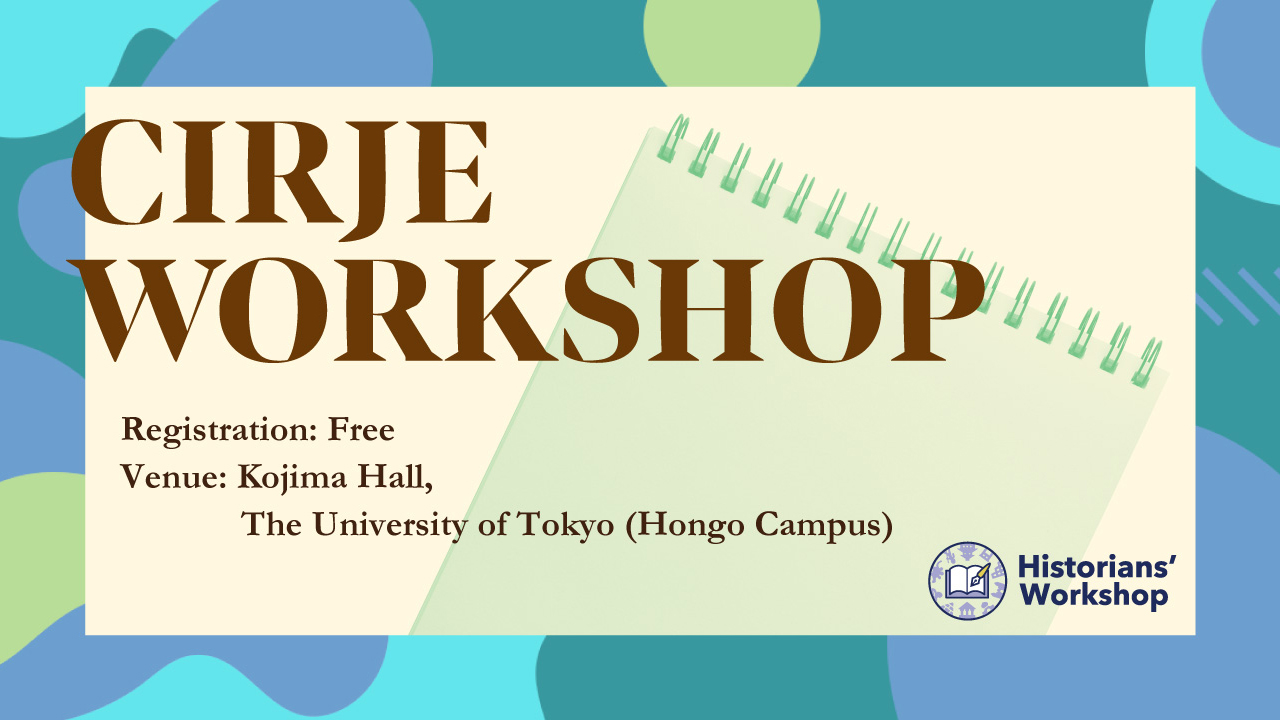このたび、Center for International Research on the Japanese Economy (CIRJE)との共催で「歴史家ワークショップ – CIRJE共催ワークショップ」を開催する運びとなりました。記念すべき第一回は、広島大学より中尾麻伊香先生をお招きし、「追悼と調査のための身体――戦後長崎における科学と宗教と原爆犠牲者」と題してご報告いただきます。中尾麻伊香先生は、核兵器と原爆犠牲者の歴史を探求される、気鋭の歴史家です。ぜひ、奮ってご参加ください。
開催概要 Event Summary
- 日時
Date -
2024年6月28日(金)10:00-11:30(日本時間)
28 June 2024, 10.00 am – 11.30 am JST - 会場
Venue -
東京大学経済学部学術交流棟(小島ホール)2F・第3セミナー室 →MAP
#3 Seminar Room, Kojima Hall (2F), Hongo Campus, The University of Tokyo - 登壇者
Speaker -
中尾 麻伊香(広島大学 准教授)
Dr Maika Nakao (Associate Professor, Hiroshima University) - 使用言語
Language -
日本語
Japanese - 主催
-
歴史家ワークショップ Historians’ Workshop
要旨 Abstract
- 追悼と調査のための身体――戦後長崎における科学と宗教と原爆犠牲者
-
原爆犠牲者の遺体は、残された人々にとっては追悼の対象となり、科学にとっては調査対象となった。長崎は、キリスト教徒の迫害と核兵器による被害という科学と宗教の負の側面にまつわる歴史を有する。科学と宗教が持つ意味の多様性を示すように、長崎のキリスト教徒や仏教徒らは、科学に対して一般的に肯定的なイメージを持っていた。原爆投下後、原爆はしばしば究極の科学的成果として紹介されたが、永井隆の著作に見られるように、科学に対するこのような肯定的な見方は同地における信仰とも深く関わっていた。同時に、被爆地では多くの死を科学にしていく過程があった。そこには科学の進歩のための犠牲を肯定する、「科学信仰」ともいえる思想が生じていた。本発表では、科学と原爆に対する肯定的なイメージがどのように生まれ、それが原爆犠牲者の調査や追悼とどのように関わっていたのかを問う。具体的には長崎における宗教的儀式や慰霊・追悼行事、長崎大学と原爆傷害調査委員会(ABCC)が行った被爆者調査に焦点を当て、信仰と科学を結びつけた地域の行事や慣習を検討する。本発表で詳らかにされるように、信仰と科学の結びつきは、科学者と地域社会による原爆犠牲者の遺体の扱い方に具現化していたのであった。
Body for Eulogy and Investigation: Science, Religion, and Atomic Bomb Victims in Postwar
NagasakiSince the atomic bombing, the remains of atomic bomb victims have been the subject of both medical investigation and religious like veneration and eulogies in Nagasaki.
Nagasaki, Japan’s main port from the 17th to the 19th century, has a deep history of Christian oppression and nuclear victimhood. At the same time, exemplifying the multiplicity of meanings of both science and religion, Nagasaki Christians and others held a generally positive image of science. After the atomic attack, the atomic bomb was often presented as the ultimate scientific achievement. Significantly, such positive views on science related to religious belief, as was found in the writings of Nagasaki’s “saint”, Nagai Takashi. All the while, starting immediately after the bombing, scientists engaged in the process of turning victims’ corpses into scientific data. There arose an ideology that could be described as ‘faith in science’, which affirmed the sacrifices made for scientific progress. This paper asks how the positive image of science and the atomic bomb emerged and how it was related to the investigation of, and the eulogy given for, the atomic bomb victims. By focusing on the religious rituals by locals and scientific investigations conducted by the physicians of Nagasaki University and the Atomic Bomb Casualty Commission (ABCC), this paper seeks to uncover the local daily practices that connected science and religion. Such connections were literally embodied in A-bomb victims’ bodily remains and the way they were treated by both scientists and the community.
参加登録
参加を希望される方は下記の Google Form から参加登録をお願いします。参加登録締め切りは6月27日(木)17:00です。

